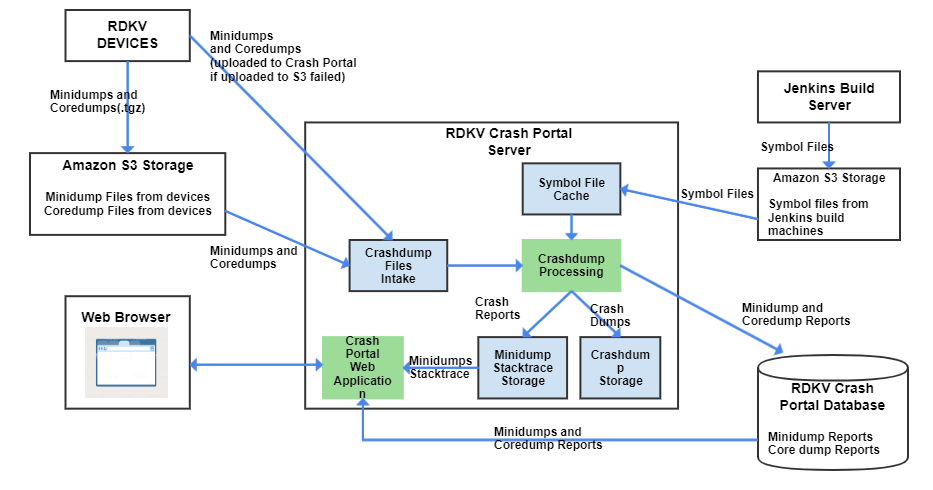RDK Resources
[*RDK Preferred*]
Code Management Facility
RDK Forums
[RDK Conferences]
RDK Support
Archives
Papers & Presentations Archive![]()
See information about integrating Breakpad and creating minidump in Breakpad integration to RDK-V component page
Crash upload component helps in uploading the crashes (coredump or minidump files) that happened in the set-top boxes to the crash portal server(which can be configured). Crash portal collects crash dumps and logs which happened in the connected STBs, process these and provide a meaningful backtrace.
Crash Portal server processes 2 types of crash dump files
Minidump or core files are tarred and uploaded by crashUpload component:
https://code.rdkcentral.com/r/plugins/gitiles/rdk/components/generic/crashupload
dump-backup.service invokes /lib/rdk/core_shell.sh which is responsible for calling uploadDumps.sh script to upload the crash dump to crash portal server.
echo "|$RDK_PATH/core_shell.sh %e %s %t" >/proc/sys/kernel/core_pattern
uploadDumps.sh script collects the following and compresses it to create a .tgz format
CrashPortal URL should be configured in the /lib/rdk/uploadDumps.sh script
eg:
PORTAL_URL="35.155.171.121:80"
REQUEST_TYPE=17
